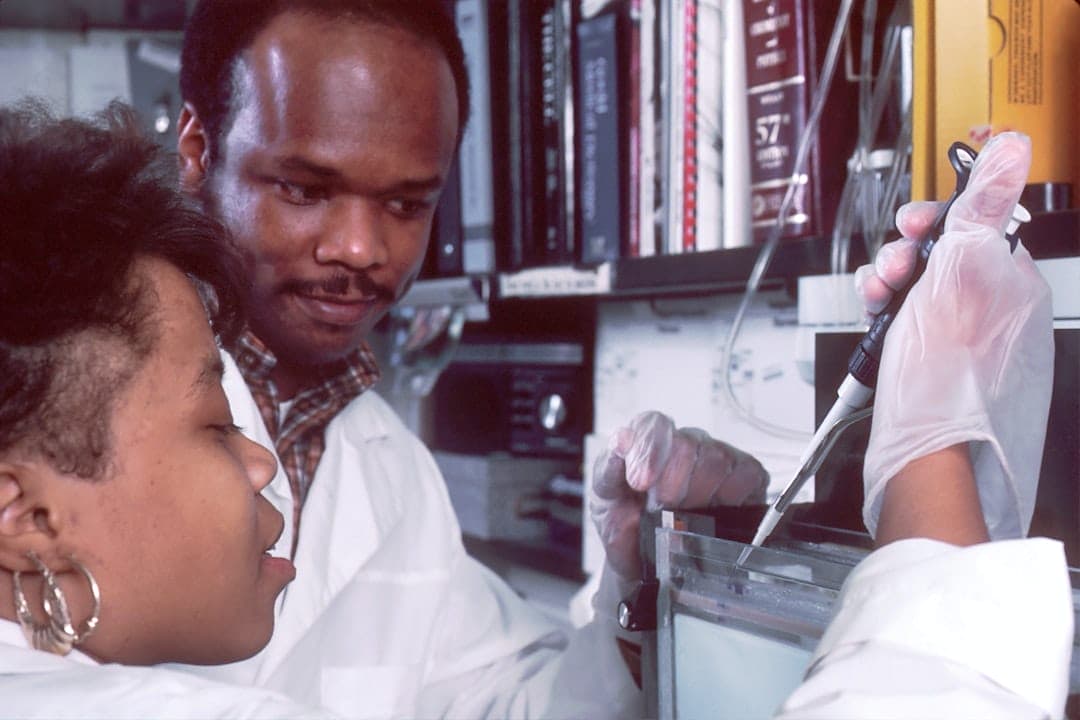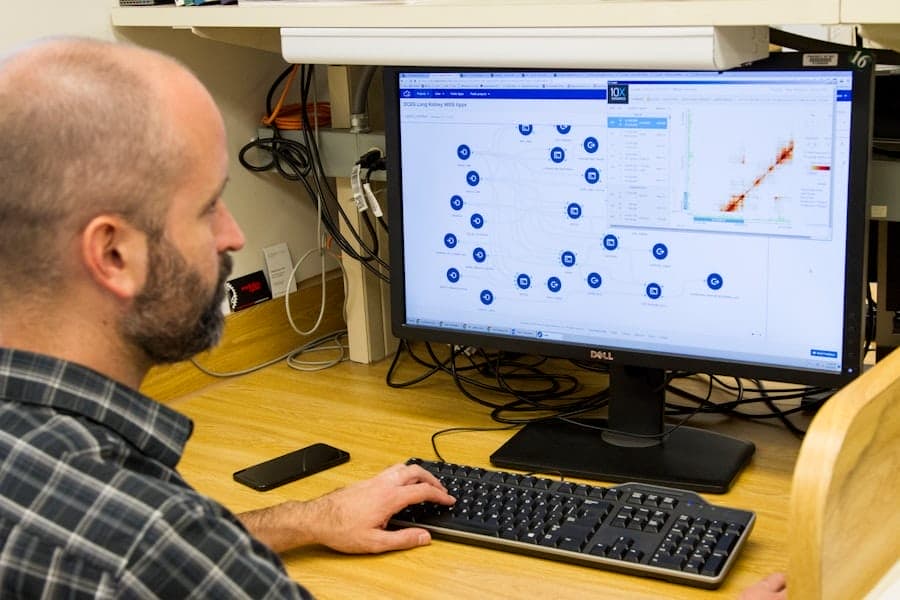
In the ever-evolving landscape of digital marketing, data-driven pay-per-click (PPC) campaigns have emerged as a cornerstone for businesses seeking to maximize their online presence. At its core, a data-driven PPC campaign leverages analytics and metrics to inform decision-making, ensuring that every dollar spent is strategically allocated. By utilizing data, we can identify trends, understand consumer behavior, and optimize our advertising efforts to achieve better results.
Data-driven PPC campaigns allow us to move beyond intuition and guesswork. Instead of relying solely on our instincts or anecdotal evidence, we can harness the power of data to make informed choices. This approach not only enhances our targeting capabilities but also improves our overall return on investment (ROI).
By analyzing key performance indicators (KPIs) such as click-through rates (CTR), conversion rates, and customer acquisition costs, we can refine our strategies and allocate resources more effectively.
Key Takeaways
- Data-driven PPC campaigns use data and analytics to make informed decisions and optimize ad performance.
- ROAS (Return on Ad Spend) is a crucial metric in PPC campaigns as it measures the effectiveness of advertising efforts.
- Leveraging data allows for targeted ads that are more relevant to the audience, leading to higher engagement and conversion rates.
- Analytics play a key role in optimizing PPC campaigns by providing insights into ad performance and audience behavior.
- A/B testing helps in creating data-driven ads by comparing different ad variations to determine the most effective one.
The Importance of ROAS in PPC Campaigns
Measuring Campaign Effectiveness
Return on Ad Spend (ROAS) is a critical metric that we must prioritize when evaluating the success of our PPC campaigns. ROAS measures the revenue generated for every dollar spent on advertising, providing us with a clear picture of our campaign’s effectiveness. A high ROAS indicates that our ads are resonating with our target audience and driving profitable conversions, while a low ROAS signals the need for adjustments.
Data-Driven Decision Making
Understanding ROAS is essential for making data-driven decisions. By analyzing this metric, we can identify which campaigns, keywords, or ad groups are performing well and which ones require optimization.
This insight allows us to allocate our budget more effectively, focusing on high-performing areas while minimizing spend on underperforming segments.
Optimizing for Better Results
According to a study by WordStream, businesses that actively monitor and optimize their ROAS can see significant improvements in their overall advertising performance. By prioritizing ROAS, we can maximize our return on investment and drive more revenue from our PPC campaigns.
Leveraging Data for Targeted Ads

One of the most significant advantages of data-driven PPC campaigns is the ability to create highly targeted ads. By analyzing demographic data, user behavior, and search intent, we can tailor our messaging to resonate with specific audience segments. This level of personalization not only enhances user experience but also increases the likelihood of conversions.
To leverage data effectively, we can utilize tools such as Google Analytics and social media insights to gather valuable information about our audience. By understanding their preferences, interests, and pain points, we can craft compelling ad copy and design that speaks directly to them. Additionally, we can segment our audience based on various criteria, such as location, age, or purchasing behavior, allowing us to deliver more relevant ads that drive engagement.
Using Analytics to Optimize PPC Campaigns
Analytics play a pivotal role in optimizing our PPC campaigns. By continuously monitoring performance metrics, we can identify trends and make data-driven adjustments in real time. This proactive approach enables us to stay ahead of the competition and ensure that our campaigns remain effective.
Key analytics tools such as Google Ads and Facebook Ads Manager provide us with comprehensive insights into our campaign performance. We can track metrics like impressions, clicks, conversions, and cost-per-click (CPC) to gauge the effectiveness of our ads. By analyzing this data, we can identify which keywords are driving traffic and which ones are falling flat.
This information empowers us to refine our keyword strategy, adjust bidding strategies, and ultimately improve our overall campaign performance.
Implementing A/B Testing for Data-Driven Ads
A/B testing is an invaluable technique that allows us to compare two versions of an ad to determine which one performs better. By systematically testing different elements—such as headlines, images, or calls-to-action—we can gather data on what resonates most with our audience. This iterative process not only enhances our understanding of consumer preferences but also leads to more effective ad campaigns.
When implementing A/B testing, it’s essential to focus on one variable at a time to ensure accurate results. For instance, if we’re testing two different headlines, we should keep all other elements constant. Once we gather sufficient data, we can analyze the results to determine which version yielded a higher conversion rate.
This approach allows us to make informed decisions based on empirical evidence rather than assumptions.
Maximizing ROAS with Dynamic Ad Campaigns

Dynamic ad campaigns represent a powerful strategy for maximizing ROAS in our PPC efforts. These campaigns automatically generate ads based on user behavior and preferences, allowing us to deliver highly relevant content to potential customers. By utilizing dynamic ads, we can ensure that our messaging aligns with users’ interests at the right moment in their buying journey.
For instance, if a user has previously visited our website and viewed specific products, dynamic ads can showcase those items in their social media feeds or search results. This personalized approach not only increases the likelihood of conversions but also enhances the overall user experience. According to a report by AdRoll, dynamic ads can lead to a 50% increase in click-through rates compared to static ads.
The Role of Machine Learning in Data-Driven PPC Campaigns
Machine learning is revolutionizing the way we approach data-driven PPC campaigns. By leveraging algorithms that analyze vast amounts of data, machine learning enables us to make smarter decisions faster than ever before. These algorithms can identify patterns and trends that may not be immediately apparent to human analysts, allowing us to optimize our campaigns with greater precision.
For example, machine learning can help us predict which keywords are likely to perform well based on historical data and user behavior. This predictive capability allows us to allocate our budget more effectively and focus on high-potential opportunities. Additionally, machine learning can automate bidding strategies by adjusting bids in real time based on performance metrics, ensuring that we remain competitive in the ever-changing digital landscape.
Measuring Success: Tracking ROAS in Data-Driven PPC Campaigns
To measure the success of our data-driven PPC campaigns effectively, tracking ROAS is paramount. By establishing clear benchmarks and regularly monitoring this metric, we can assess the overall health of our advertising efforts. A consistent focus on ROAS allows us to identify areas for improvement and make informed decisions about budget allocation.
We should also consider segmenting our ROAS analysis by different dimensions—such as campaign type, geographic location, or device used—to gain deeper insights into performance variations. This granular approach enables us to pinpoint specific areas where we can enhance efficiency and drive better results.
As we continue to refine our strategies based on ROAS insights, we position ourselves for sustained success in the competitive world of PPC advertising.
In conclusion, embracing a data-driven approach to PPC campaigns is essential for maximizing ROAS and achieving long-term success in digital marketing. By leveraging analytics, implementing A/B testing, utilizing dynamic ads, and harnessing the power of machine learning, we can create targeted campaigns that resonate with our audience and drive meaningful results. As we continue to evolve in this dynamic landscape, let’s commit ourselves to making informed decisions based on data—ensuring that every advertising dollar spent contributes to our overall business goals.
If you are interested in learning more about how modern technology is shaping the world of digital marketing, check out this article on Modern Technology. It discusses the latest trends and advancements in the industry that are helping businesses maximize their ROI through data-driven PPC campaigns. Additionally, for those looking to improve their traffic management strategies, be sure to read this article on Traffic Management. It provides valuable insights on how to effectively drive traffic to your website and increase conversions. Lastly, if you are curious about the role of automation in manufacturing and how it can benefit your business, take a look at this article on
Transform your business with with Modern Labyrinth’s nationwide web development, WordPress, and digital marketing solutions.
Phone: 1-888-367-5580
Email: [email protected]
